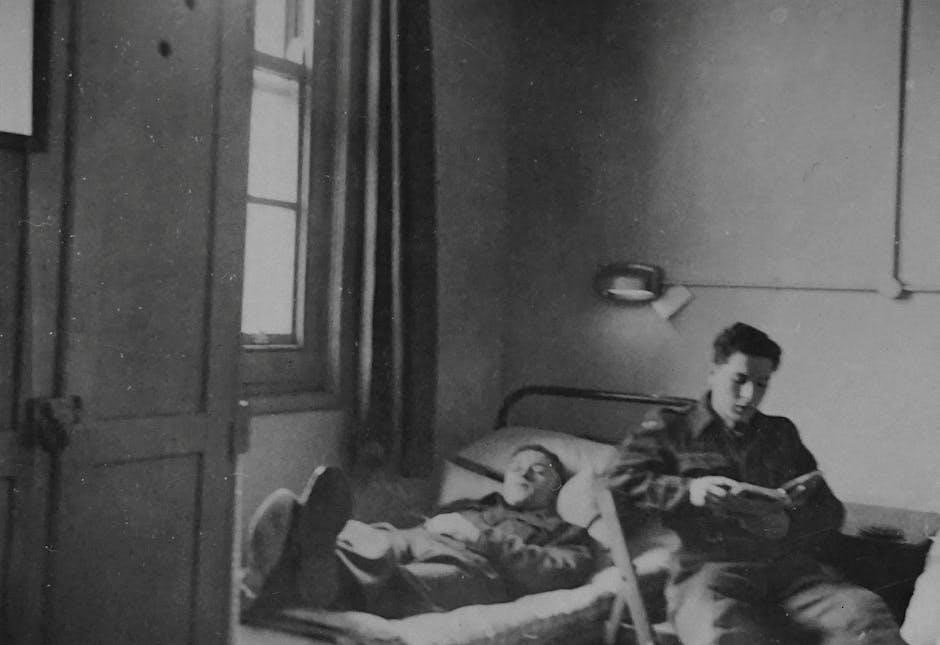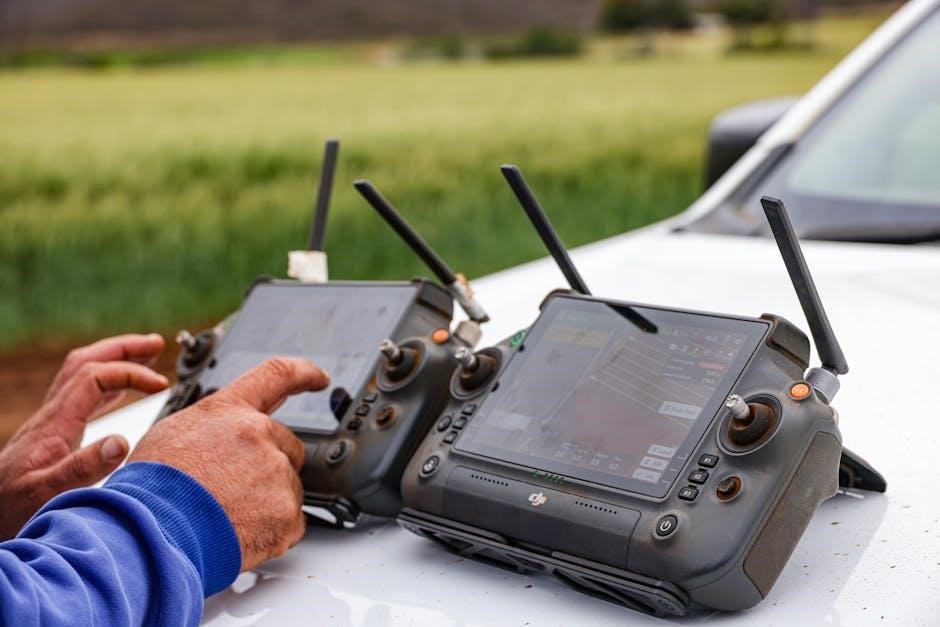bunk bed assembly instructions
Assembling bunk beds is a practical solution for saving space and creating a fun sleeping environment. While it may seem challenging, proper guidance makes it manageable. This guide provides step-by-step instructions to ensure a safe and sturdy setup, helping you create a comfortable space for years to come.
Importance of Proper Assembly

Proper assembly of bunk beds is crucial for safety, stability, and longevity; A well-assembled bunk bed ensures the structure can withstand daily use and support the weight of sleepers securely. Improper assembly can lead to wobbling, collapse, or other safety hazards, especially for children. Wood is a durable material, but it requires precise construction to maintain its strength. Always follow manufacturer instructions to avoid structural weaknesses. Using bolts instead of screws for load-bearing parts and securing the bed to the wall can enhance stability. Regular checks and tightening loose parts are essential to maintain safety over time. Proper assembly not only prevents accidents but also extends the lifespan of the bunk bed, ensuring it remains a reliable and comfortable sleeping solution for years.
Benefits of DIY Assembly
Assembling bunk beds yourself offers numerous benefits, including cost savings and a sense of accomplishment. DIY assembly allows you to customize the setup to fit your space and preferences, ensuring the final product meets your specific needs. It also provides an opportunity to develop handyman skills and understand the construction of furniture. By following detailed instructions, you can ensure the bunk bed is built safely and durably, giving you peace of mind. Additionally, DIY assembly can be a fun and rewarding project, allowing you to create a functional and comfortable sleeping space for your family or guests. With patience and attention to detail, you can achieve professional-quality results without hiring external help, making it a practical and fulfilling experience.

Tools and Materials Needed
Essential tools include a screwdriver, wrench, and Allen key, while materials like screws, bolts, and slats are required for a secure and stable assembly process.

Essential Tools
Assembling a bunk bed requires specific tools to ensure a secure and efficient process. A screwdriver, both flathead and Phillips, is essential for driving screws into place. An Allen wrench is necessary for tightening bolts with hexagonal sockets, commonly found in bunk bed frames. A wrench or socket set may also be needed for larger bolts. Additionally, a tape measure can help verify the correct alignment and spacing of components. For added stability, clamps can hold parts together while assembling. Organize these tools beforehand to streamline the process. Always refer to the manufacturer’s instructions for specific tool recommendations, as some models may require specialized equipment. Having all tools ready ensures a smooth assembly experience and helps prevent delays or mistakes. Proper tool usage is crucial for safety and structural integrity.
Required Materials
Assembling a bunk bed requires a variety of materials to ensure stability and safety. These typically include pre-drilled wood planks for the frame, metal brackets for support, and screws or bolts for securing connections. Support slats are essential for holding mattresses, while guardrails and ladder components ensure user safety. Additional materials may include washers, nuts, and Allen bolts for added security. Some bunk beds come with wall anchors to prevent tipping. Always verify the materials list in the manufacturer’s instructions to ensure no components are missing. Organizing these materials beforehand streamlines the assembly process. Proper materials are crucial for building a sturdy and reliable bunk bed, so double-checking the inventory is a must. Missing or damaged parts can delay assembly, so addressing these issues early is important. Using high-quality materials ensures durability and safety for years of use.

Preparing for Assembly

Clear a spacious workspace, ensuring it’s free from clutter and obstacles. Organize all components and hardware, referencing the instructions for a smooth process. Review the manual thoroughly to understand each step and requirement before starting.
Setting Up the Workspace
Begin by clearing a large, flat area to accommodate all bunk bed components. Remove furniture, rugs, and breakable items to prevent damage and ensure easy movement. Cover the floor with a protective cloth or old sheets to safeguard against scratches or spills. Good lighting is essential, so position lamps or worklights to illuminate the workspace. Organize all parts and hardware in labeled containers or bags for quick access. Double-check that you have all necessary tools and components before starting. Assembling the bed in the room where it will be used avoids the hassle of moving a fully assembled bunk bed. Finally, ensure the area is free from clutter and tripping hazards to maintain a safe working environment throughout the assembly process.
Understanding Manufacturer Instructions
Before starting assembly, thoroughly read and understand the manufacturer’s instructions; These guidelines are tailored to your specific bunk bed model, ensuring safety and correctness. Familiarize yourself with the parts list, hardware, and step-by-step directions. Pay attention to warnings, tips, and diagrams, as they highlight critical steps and potential pitfalls. Organize components according to the instructions to avoid confusion. Double-check that all parts are included and undamaged before beginning. Following the manufacturer’s instructions closely will help you avoid mistakes, ensuring a stable and secure bunk bed. Take your time to understand each stage, as proper assembly is crucial for safety and durability. By adhering to the provided instructions, you’ll achieve a professional-quality result, creating a safe and functional sleeping space for years to come.
Safety Considerations
Ensuring stability and securing all components is critical for safety. Always use proper fasteners and follow weight limits to prevent accidents. Regularly inspect for loose parts.
Ensuring Stability
Stability is crucial for bunk bed safety, especially for children. Use bolts and nuts for load-bearing connections, ensuring they are tightly secured. Counterbore holes for flush bolt heads, allowing easy tightening. Add support slats and center braces to prevent sagging. Use triangles or box frames for structural integrity, as they resist toppling. Anchor the bed to the wall to enhance stability and prevent tipping. Avoid using pocket screws in load-bearing areas; opt for solid screws with wooden plugs for a clean finish. Regularly inspect and tighten all hardware to maintain safety. Over-build rather than under-build, using thicker wood where needed. Ensure the ladder is sturdy and securely attached. By prioritizing stability, you create a safe and durable sleeping environment.
Securing the Ladder
Securing the ladder is a critical step in bunk bed assembly to ensure safety and accessibility. Start by attaching the ladder to the bed frame using the provided screws or bolts, following the manufacturer’s instructions. Make sure the ladder is aligned properly and tightly fastened to avoid any wobbling. For added stability, consider using hooks or brackets to reinforce the connection. Once installed, test the ladder by applying gentle pressure to ensure it can support the intended weight. Regularly inspect the ladder’s attachment points and tighten any loose hardware to maintain safety. A secure ladder not only prevents accidents but also provides peace of mind for users, especially children. Always prioritize a sturdy and reliable ladder setup to ensure the bunk bed remains safe and functional over time.
Step-by-Step Assembly Guide
Organize components, follow instructions, and use tools to build a stable structure. Start with the base, add side rails, then support slats, and finish with the ladder and guardrails.
Assembling the Base
Begin by unpacking and organizing the base components, ensuring all parts are included. Use a spirit level to ensure the floor is even. Attach the side rails to the headboard and footboard using bolts, tightening firmly. Next, connect the support beams between the rails for added stability. Use washers and nuts to secure all joints. Double-check alignment and tighten any loose connections. Ensure the base is level and sturdy before proceeding to the upper bunk. Follow the manufacturer’s instructions for specific bolt locations and torque settings. Properly assembling the base is crucial for the overall stability and safety of the bunk bed. Take your time to ensure each connection is secure and aligned correctly.
Building the Upper Bunk
Once the base is secure, focus on assembling the upper bunk. Start by attaching the side rails to the upper bunk’s headboard and footboard, mirroring the base assembly. Use the provided bolts and washers, ensuring all connections are tight. Next, place the support slats evenly across the upper frame to distribute weight evenly. Double-check that the upper bunk is level and aligned with the base using a spirit level. Secure the slats with screws, ensuring they are tightly fastened. Finally, attach the upper bunk frame to the base using the vertical support brackets or posts provided. Make sure all joints are stable and the structure is sturdy. Avoid over-tightening, which could damage the wood. Properly assembling the upper bunk ensures safety and prevents wobbling. Always follow the manufacturer’s instructions for specific hardware and alignment details.
Attaching Side Rails
Attaching side rails is a critical step in ensuring the stability and safety of the bunk bed. Begin by positioning the side rails along the edges of the upper and lower bunk frames, aligning the pre-drilled holes with the corresponding bolts. Use the provided bolts and washers to secure the rails tightly. Make sure the rails are evenly spaced and properly aligned to avoid any wobbling. Tighten the bolts firmly, but avoid over-tightening, which could damage the wood. For added stability, ensure the side rails are flush with the edges of the mattress support slats. Double-check the alignment using a spirit level to confirm the rails are straight and level. Properly attached side rails provide essential support for the mattresses and ensure the bunk bed remains sturdy and secure for years of use.
Installing Support Slats
Installing support slats is essential for ensuring the bunk bed’s structural integrity and providing a sturdy base for the mattresses. Begin by placing the slats evenly across the bed frame, aligning them with the pre-drilled holes in the side rails. Use the provided screws to secure each slat firmly, ensuring they are tightly fastened to prevent any shifting. The slats should be spaced evenly, typically every 6-8 inches, to distribute the weight evenly and prevent sagging. Once all slats are in place, double-check their alignment using a spirit level to ensure they are straight and level. Properly installed support slats not only enhance the bed’s stability but also extend its lifespan by preventing excessive wear and tear. Always refer to the manufacturer’s instructions for specific spacing and securing requirements.
Adding the Ladder
Adding the ladder is a critical step in bunk bed assembly, ensuring safe and easy access to the upper bunk. Begin by positioning the ladder according to the manufacturer’s instructions, typically attaching it to the side of the bed frame. Align the ladder’s pre-drilled holes with the corresponding holes on the bed frame and secure it using the provided bolts or screws. Tighten these fasteners firmly to ensure the ladder is stable and cannot shift during use. For added safety, check that the ladder is at a slight angle to prevent it from being too steep or difficult to climb. Once installed, test the ladder by applying gentle pressure to ensure it is securely attached and can support the intended weight. Properly installing the ladder ensures safe and convenient access to the upper bunk, completing the functional assembly of the bunk bed.
Securing Guardrails
Securing guardrails is a vital step in ensuring the safety and stability of the bunk bed. Guardrails prevent accidental falls from the upper bunk and provide a sense of security, especially for children. Begin by identifying the pre-drilled holes on the upper bunk frame where the guardrails will be attached. Align the guardrails with these holes, ensuring they are evenly spaced and properly positioned. Use the provided screws or bolts to secure the guardrails tightly to the frame. Make sure all connections are firm and leave no gaps. Double-check the alignment to ensure the guardrails are straight and level. For added stability, some models may require additional brackets or supports, which should be installed according to the manufacturer’s instructions. Once secured, test the guardrails by gently applying pressure to ensure they are sturdy and can withstand regular use. Properly installed guardrails are essential for creating a safe and reliable bunk bed setup.

Tips for Successful Assembly
Organize components beforehand, follow instructions carefully, and use proper tools. Work in a clean, well-lit space, and double-check each step to ensure accuracy and safety.
Organizing Components
Organizing components is crucial for a smooth assembly process. Begin by laying out all parts in a clean, well-lit workspace. Use small containers or bags to separate screws, bolts, and other hardware, labeling each for easy identification. Group larger components, such as bed frames and side rails, by their assembly stage to avoid confusion. Cross-reference the parts list in the manual to ensure all items are accounted for. This step prevents delays and ensures every piece is accessible when needed. A well-organized setup saves time, reduces frustration, and helps you follow instructions more effectively. Double-check your inventory before starting to identify any missing or damaged parts early on. Proper organization is the foundation of a successful and stress-free assembly experience.
Using Proper Fastening Techniques

Using proper fastening techniques is essential for ensuring the stability and safety of your bunk bed. Always use the hardware provided in the kit, such as bolts, nuts, and washers, as they are designed for specific load-bearing requirements. Tighten all connections firmly, but avoid overtightening, which could damage the wood or strip screws. For a clean finish, consider using countersunk screws and filling the holes with wooden plugs. When assembling load-bearing parts, opt for bolts over screws, as they provide greater strength and durability. Ensure all joints are aligned correctly before securing them. Double-check each connection to confirm it is tight and even. Proper fastening techniques not only enhance the bed’s structural integrity but also prevent wobbling or collapse, ensuring a safe and sturdy sleeping environment for years to come.
Troubleshooting Common Issues
Troubleshooting common issues during bunk bed assembly involves identifying misaligned parts, loose connections, or missing hardware. Ensure all components are correctly aligned and securely fastened. Consult the manual or manufacturer support for unresolved problems.

Addressing Wobbly Frames
A wobbly frame is a common issue during bunk bed assembly, often caused by loose connections or improper alignment. To address this, start by tightening all bolts and screws, ensuring they are securely fastened. Check the frame for any gaps or misaligned parts, as these can contribute to instability. If the issue persists, verify that all support slats and brackets are properly installed. Additional braces or center supports can be added for extra stability. Ensure the bed is placed on a level surface, as an uneven floor can exacerbate wobbling. Regularly inspect and tighten hardware over time, as constant use may cause connections to loosen. Addressing a wobbly frame promptly is crucial for safety and to prevent further damage to the structure.
Dealing with Missing Parts
Missing parts can halt the assembly process, so it’s crucial to address this issue promptly. Begin by thoroughly checking the packaging and inventory list to ensure the part isn’t simply misplaced. If a component is indeed missing, contact the manufacturer or supplier immediately, providing your order number and the specific part number from the instructions. Most companies offer replacement parts quickly to avoid delays. While waiting for a replacement, organize the remaining components to make the most of your time. If a temporary workaround is necessary, ensure it doesn’t compromise safety or structural integrity. Always follow the manufacturer’s guidance for substitutions to maintain the bed’s stability. Addressing missing parts early ensures a smooth and successful assembly process without compromising the final product’s quality or safety.

Maintenance and Upkeep
Regular maintenance ensures the longevity and safety of your bunk bed. Check for loose parts, tighten hardware, and inspect for damage to prevent potential issues over time.
Regular Checks
Regular checks are essential to maintain the safety and stability of your bunk bed. Inspect all bolts, screws, and support slats for tightness and signs of wear. Ensure the ladder is secure and guardrails are firmly attached. Check for any wobbling or unevenness in the frame, addressing issues promptly. Schedule these inspections every few months, especially if the bed is used frequently by children. Pay attention to high-stress areas like joints and connections, as they are prone to loosening over time. Use a wrench or screwdriver to tighten any loose hardware. Additionally, verify that all safety features, such as guardrails and ladder rungs, are intact and functioning properly. Regular maintenance not only extends the lifespan of the bunk bed but also ensures a safe sleeping environment for its users.
Tightening Loose Parts
Regularly tightening loose parts is crucial for maintaining the stability and safety of your bunk bed; Over time, bolts, screws, and other fasteners may loosen due to constant use. Inspect the bed frame, side rails, and ladder periodically, paying attention to areas with heavy stress. Use a wrench or screwdriver to tighten any loose hardware. For added security, consider using threadlocker on bolts to prevent them from coming loose over time. If you notice any parts that cannot be tightened sufficiently, replace them immediately to avoid potential hazards. Tightening loose parts not only ensures the bed remains stable but also prevents accidents and extends the lifespan of the bunk bed. Make this a part of your routine maintenance to keep the structure safe and secure for years to come.






























